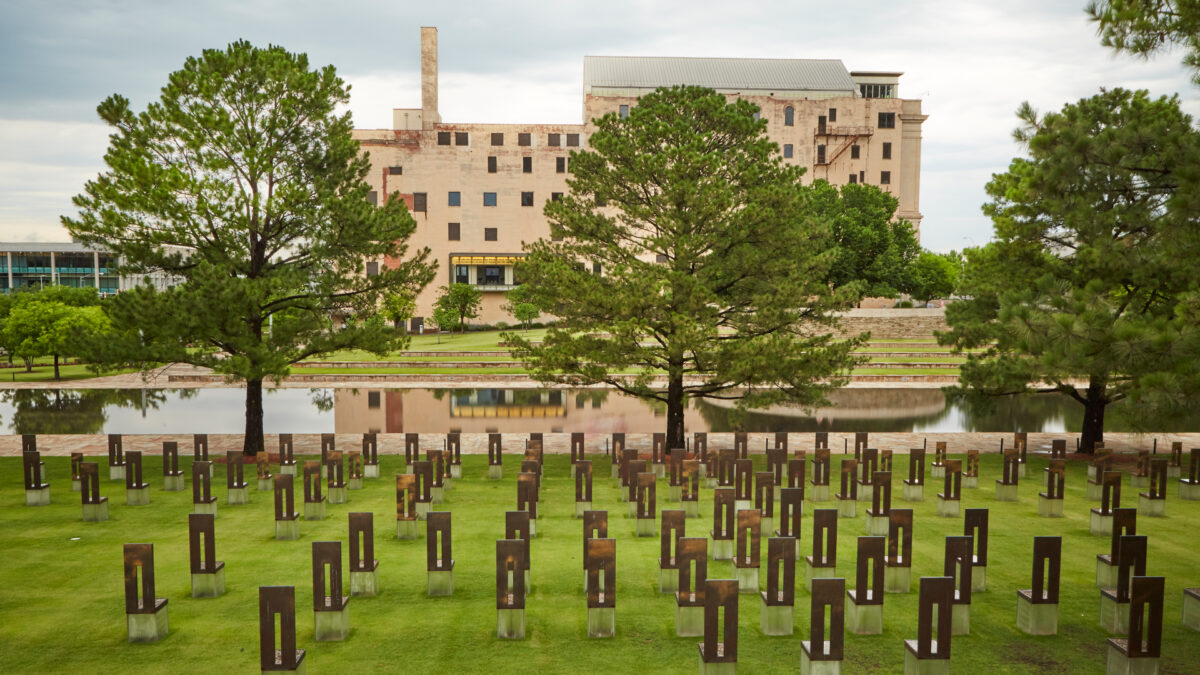Oklahoma City National Memorial – Remembrance And Hope

Have you ever visited a place that fills you with both sorrow and hope? The Oklahoma City National Memorial does just that. This site honors the victims, survivors, and rescuers of the 1995 bombing. Walking through the memorial, you’ll see the Field of Empty Chairs, each representing a life lost. The Survivor Tree, a symbol of resilience, stands tall despite the tragedy. Reflecting pools and a museum offer a deeper understanding of that fateful day. Visiting this memorial isn't just about remembering the past; it's about finding strength and unity in the face of adversity. Ready to learn more?
Oklahoma City National Memorial – A Place of Reflection
The Oklahoma City National Memorial stands as a poignant reminder of the tragic bombing that occurred on April 19, 1995. This site honors the victims, survivors, and first responders. Visitors find a place of reflection, learning, and hope.
The Outdoor Symbolic Memorial
The Outdoor Symbolic Memorial spans over three acres and includes several significant features. Each element tells a part of the story, creating a powerful experience for visitors.
The Gates of Time: These monumental gates mark the moments before and after the bombing. The east gate shows 9:01, symbolizing the last moments of peace, while the west gate shows 9:03, representing the moment healing began.
The Reflecting Pool: A serene, shallow pool sits between the Gates of Time. Its calm surface offers a place for contemplation and reflection.
The Field of Empty Chairs: 168 empty chairs, each representing a life lost, stand in rows on the former footprint of the Alfred P. Murrah Federal Building. The chairs are arranged by the floor on which the victims were located, with smaller chairs for the 19 children who perished.
The Survivor Tree: This American elm, which withstood the blast, symbolizes resilience and hope. Visitors can sit beneath its branches and reflect on the strength of the human spirit.
The Memorial Museum
The Memorial Museum provides an in-depth look at the events of April 19, 1995, and the aftermath. Through interactive exhibits and personal stories, visitors gain a deeper understanding of the impact of the bombing.
The Gallery of Honor: This gallery pays tribute to the 168 individuals who lost their lives. Personal artifacts, photos, and stories create a moving tribute to each victim.
The Investigation: This exhibit details the extensive investigation that followed the bombing. It includes evidence, timelines, and multimedia presentations that explain how the perpetrators were brought to justice.
The Rescue and Recovery: Learn about the heroic efforts of first responders and volunteers who worked tirelessly in the aftermath. This exhibit highlights their bravery and dedication.
The Healing: This section focuses on the community's journey toward healing and rebuilding. It showcases the support and solidarity that emerged in the wake of the tragedy.
The Children's Area
The Children's Area offers a space for younger visitors to engage with the memorial in a meaningful way. It provides educational resources and activities designed to help children understand the significance of the site.
The Children's Wall: This wall features hand-painted tiles created by children from across the country. Each tile expresses messages of hope, love, and peace.
The Hope Garden: A tranquil garden where children can plant flowers and learn about the importance of hope and resilience. It serves as a living tribute to the future.
Visiting the Memorial
Planning a visit to the Oklahoma City National Memorial ensures a meaningful experience. Here are some tips to make the most of your visit.
Guided Tours: Consider joining a guided tour to gain deeper insights into the memorial's features and history. Knowledgeable guides provide valuable context and stories.
Educational Programs: The memorial offers various educational programs for schools and groups. These programs help visitors of all ages understand the significance of the site.
Visitor Center: Start your visit at the Visitor Center to get maps, brochures, and information about the memorial. Staff members are available to answer questions and provide assistance.
Memorial Store: The Memorial Store offers books, souvenirs, and educational materials related to the bombing and the memorial. Proceeds support the maintenance and educational programs of the site.
Reflecting on the Oklahoma City National Memorial
The Oklahoma City National Memorial stands as a powerful tribute to resilience and hope. Visiting this site offers a chance to honor those affected by the tragic bombing and to reflect on the strength of the human spirit. The Survivor Tree, Field of Empty Chairs, and Reflecting Pool each tell a part of the story, making it a deeply moving experience.
Whether you're a history buff or someone seeking a place for quiet contemplation, this memorial provides a meaningful visit. The museum adds depth to the experience, offering personal stories and artifacts that bring history to life.
A trip here isn't just about looking back; it's about finding hope and inspiration for the future. The memorial reminds us of the importance of community, resilience, and the enduring power of remembrance.

